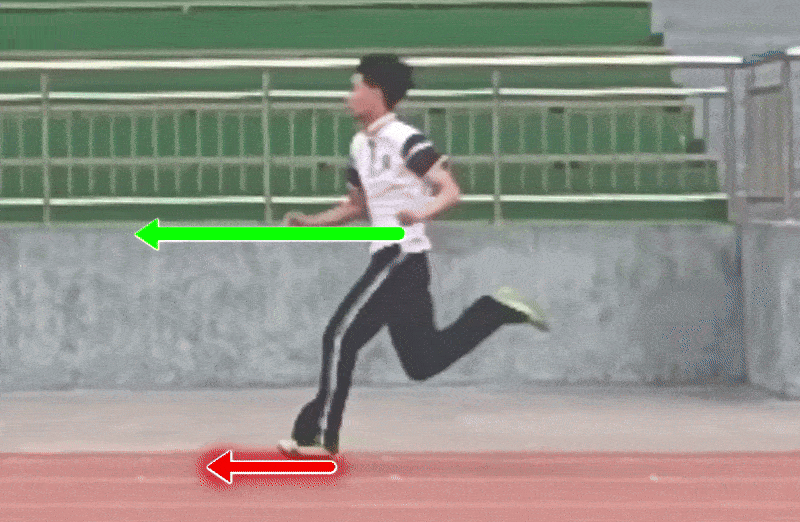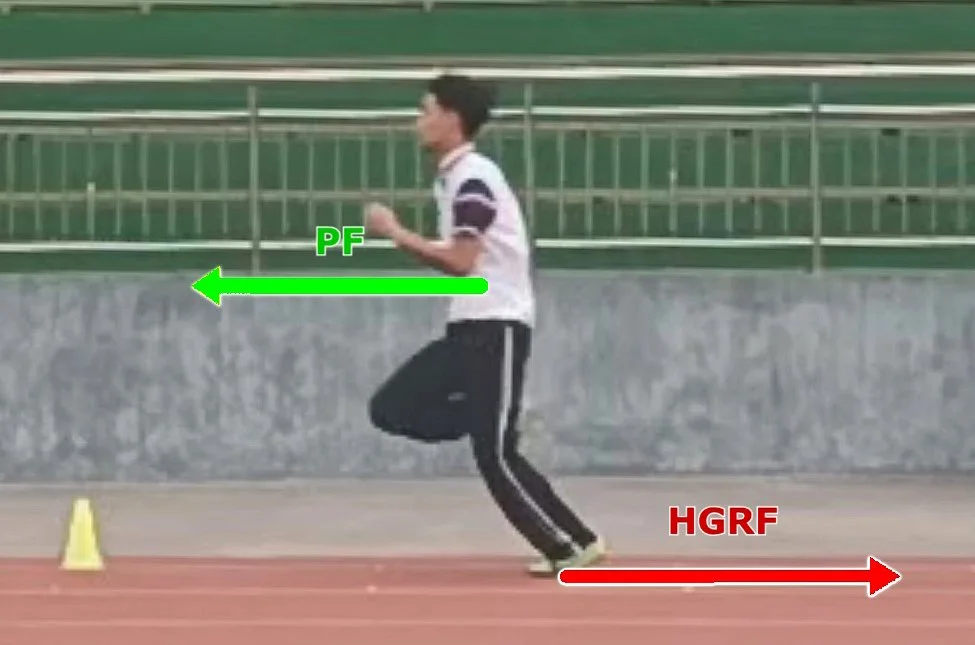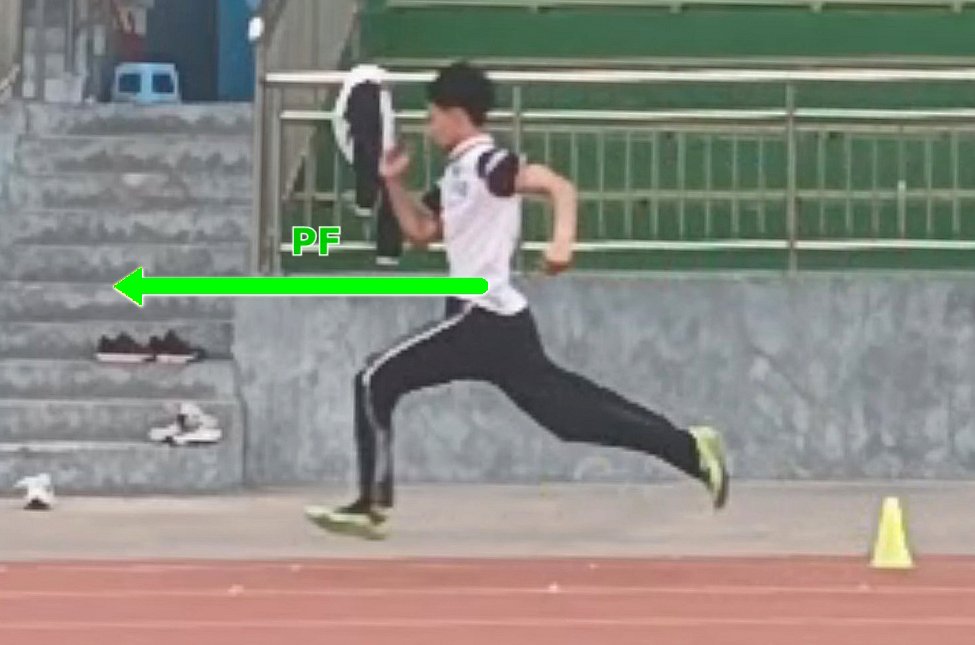DUAL ROLE OF FRICTION IN RUNNING
Introduction
Running involves complex interactions between multiple forces acting on the body. These can be broadly categorized into internal forces, generated by muscles, joints, and tendons, and external forces, such as gravity, ground reaction forces, friction, air resistance, and other environmental factors. Understanding how these forces interact is a detailed and extensive topic.
This article focuses specifically on ground friction forces and their positive and negative effects on running technique, highlighting how they influence forward propulsion and braking.
Visual Cues Guide
The animation below shows a side view of a runner, illustrating the interaction between propulsive and friction forces during ground contact.
•Green Arrow – Propulsive Force (PF): Directed forward, this force represents the push that drives the runner ahead after the foot pushes off the ground. Its length changes during the stride, reflecting variations in intensity.
•Red Arrow – Horizontal Ground Reaction Force (HGRF): Mainly associated with friction, this force changes direction throughout the stance phase:
•Forward-pointing: Acts as a brief brake when the foot first contacts the ground (braking phase).
•Backward-pointing: Assists in pushing the runner forward during toe-off (propulsive phase).
•Absent: During the flight phase when the foot is off the ground.
This visualization demonstrates the dual role of ground friction: initially slowing the runner slightly to stabilize the body, and then supporting forward acceleration to enhance propulsion.
Let's break down the animations and explain what is happening.
The first thing to note is that the green arrow, which represents Propulsive Force (PF), is present throughout the stride, although its length changes. This indicates that PF varies in intensity during the running stride. You can think of PF as the force that move the runner forward.
The red arrow represents the Horizontal Ground Reaction Force (HGRF). Unlike PF, it is not constant and changes both in appearance and direction. You can imagine HGRF as the ground either giving a slight “brake” or “push” depending on how the foot strikes and leaves the surface.
What does this mean?
The red arrow represents HGRF, the frictional component. At the beginning of ground contact, when the foot first strikes the surface ahead of the body’s center of mass, HGRF acts forward, opposing the runner’s motion. This resistive force temporarily slows the runner, shortening the green PF arrow, and allows the body to stabilize in preparation for the next propulsive action. You can picture this as a gentle brake that helps the runner keep balance before the next push. This is shown in the figure below.
As the stance continues and the foot moves toward toe-off, the direction of HGRF reverses, now acting backward to help generate propulsion. In this phase, the ground feels like it is “pushing back,” helping the runner accelerate forward.
During mid-stance and into the propulsive phase, this backward-directed frictional force enables the runner to push forward, using coordinated extension of the hip, knee, and ankle joints. This is reflected in the green PF arrow, which increases in length as propulsive force rises.
During the flight phase, there is a moment when the runner is airborne. The foot does not touch the ground, so HGRF disappears. Only PF acts to move the runner forward, while gravity and air resistance gradually reduce forward velocity. You can imagine this as a brief “free-float” where the runner glides before the next foot strike.
Upon landing, the cycle repeats—this is the cyclic nature of the running stride.
Conclusion
Ground friction has a dual role in running mechanics, acting as both a resistive and a propulsive force. During the braking phase, it slows the runner slightly to stabilize the body and prepare for force generation. During the flight phase, it is absent. In the propulsive phase, friction assists forward acceleration through efficient muscular effort and force transfer.
Excessive braking increases energy loss and prolongs ground contact time. Its magnitude depends on several factors, including foot strike pattern, stride length, angle of contact, surface conditions, and footwear design. Ideally, the foot lands close to the vertical projection of the body’s center of mass, minimizing braking and maximizing propulsion.
Understanding this dual role of ground friction not only improves the scientific interpretation of running mechanics but also helps coaches and athletes “feel” and optimize the push and brake phases to improve performance and reduce injury risk.




